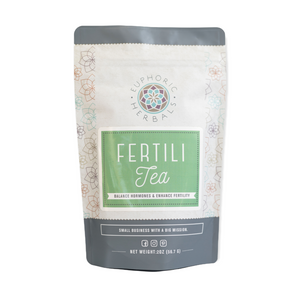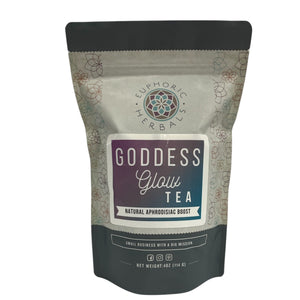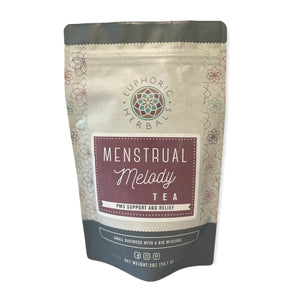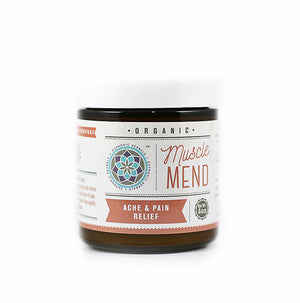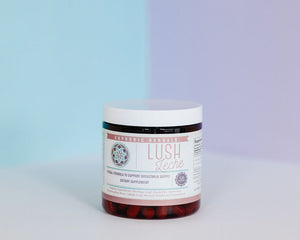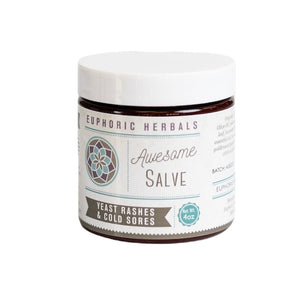Essiac tea is a traditional herbal blend that has been used for many years as a natural cancer fighter. It's made of a few select herbs that each have powerful health-boosting properties.
Because of the cancer-fighting claims and stories surrounding it, modern researchers have looked into the potential effects of Essiac tea with some very interesting results.
Here's more about the origins and potential benefits of Essiac tea, plus how to brew your own at home.
What is Essiac Tea?
Traditional Essiac tea is a blend of four different herbs: burdock root, sheep sorrel, slippery elm, and Turkey or Indian rhubarb root. The proportions of each herb in the original recipe are still somewhat of a mystery, although modern blends are believed to be close to the original.
Here's a quick look at the separate herbs and what they bring to the formula:
- Burdock Root- Burdock (Arctium lappa) is a detoxifying herb and particularly known as a blood purifier. It's also used internally and externally for a variety of skin ailments and has shown anti-cancer potential. (1)
- Sheep Sorrel- Sheep sorrel (Rumex acetosella) belongs to the buckwheat family and has both antioxidant and antiviral properties. (2)
- Slippery Elm- Slippery elm bark (Ulmus rubra) is an extremely soothing herb for the digestive tract and tissues in the mouth, throat, and respiratory tract. It's also very rich in antioxidants and nutrients.
- Rhubarb Root- Rhubarb root (Rheum officinalis) brings even more antioxidants to the table and has also shown anti-cancer potential. (3)
Origins of Essiac Tea

The original Essiac tea formula is believed to be Native American in origin. It was first brought to light by a Canadian nurse named Rene Caisse in the 1920s. She received it in some form from a Ontario Ojibwa medicine man but may have created the exact proportions of herbs herself.
In case you're wondering about the name of the tea, it's simply the last name (Caisse) of the nurse spelled backwards.
Ever since it's "discovery", Essiac tea has been a very popular natural cancer remedy. However, there's no evidence that Rene Caisse ever claimed it cured cancer, although she gave it frequently to cancer patients dealing with pain or a poor prognosis.
Potential Benefits of Essiac Tea
High Antioxidant Content
Many herbs contain antioxidants, but those found in Essiac tea appear to have particularly potent antioxidant activity. One study even found that the specific antioxidants in Essiac tea have DNA-protective activity. (4)
In fact, three of the ingredients in the tea- sheep sorrel, slippery elm, and rhubarb root- are particularly noted for their antioxidant properties. The fourth herb, burdock root, has also demonstrated antioxidant potential in studies. (5)
Why is this important?
Antioxidants are believed to be extremely important for everyday health and longevity. They fight free radical damage that contributes to many age-related diseases and have unique health-boosting properties.
May Fight Cancer

Because of its long history as a cancer remedy, Essiac tea has been the subject of a fair amount of research in this specific area. And while it is not a cancer cure in itself, some studies have shown that it may help protect the body from cancer, in part because of its antioxidant effects.
For example, test tube studies found that the herbs in Essiac tea were able to block the growth of leukemia and breast cancer cells. Also, burdock root and rhubarb root have both shown anticancer potential on their own. (1)(3)(6)
One man even attributed his prostate cancer remission to drinking Essiac tea, although it's impossible to confirm or disprove the claim. (7)
It's also important to note that while some studies (mentioned earlier) showed positive effects of the tea against breast cancer cells, one did show that it could potentially stimulate the growth of breast cancer cells. This has made the use of Essiac tea for breast cancer patients controversial. (8)
Helps Detoxify Your Body
The burdock root in Essiac tea has benefits for detox, particularly as a blood purifier. It has long been used to help clear skin issues that are connected to internal toxins and also helps to cleanse the liver and lymphatic system.
The other three herbs in Essiac tea may also help with detox because of their antioxidant properties. Antioxidants help to get toxins out of cells and tissues so that your body cleanses at the deepest level.
(Check out these other herbs that detoxify and cleanse.)
May Decrease Inflammation & Boost Immunity
Chronic inflammation is tied to free radical damage and an accumulation of toxins within the body. Essiac tea can help with both of these factors due to its antioxidant properties and cleansing nature.
At least one study has shown that the tea possesses anti-inflammatory properties. There have also been signs that it can help to boost and regulate immune function. As a bonus, sheep sorrel has demonstrated antiviral properties that may help to ward off infection (including the flu). (2)(9)
Aids Digestion

The slippery elm in Essiac tea is particularly soothing for digestion. It can help with both constipation and diarrhea and calms irritated tissues in the digestive tract.
Rhubarb root is known to have laxative properties and can help with constipation when taken in large enough amounts. It may help with overall regularity in smaller amounts.
Of course, if you are simply looking for a digestive tonic, there are other herbs for an upset stomach that are just as powerful and more effective for that purpose.
How to Make Essiac Tea
The easiest way to make this powerful tea is with an Essiac tea blend. You can also buy the herbs separately and combine them to make a tea, but it's easier to use a blend where the proportions are already fixed.
To make a cupful of tea, simply put a few teaspoons of the herbal blend in a saucepan and add about 8 ounces of hot water. Simmer over low heat for about 10 minutes. You can then either strain and drink the tea or allow it to steep for up to 12 hours for a stronger herbal infusion.
For a larger batch, use 1 ounce of an Essiac tea blend and 1 quart of water.
Traditionally, Essiac tea is taken 1-3 times a day on an empty stomach.
There's also a variation of Essiac tea that adds four other herbs: red clover, blessed thistle, watercress, and kelp. It's known as Flor Essence and can also be made into a tea, particularly for detox.
Precautions
There are few reported side effects of drinking Essiac tea, but consuming enough rhubarb root can lead to increased bowel movements and/or an upset stomach. You may also experience flu-like symptoms due to the detox properties of the tea.
Essiac tea should not be consumed if you are pregnant or nursing and is generally not recommended for children.
Drinking Essiac Tea
Essiac tea has been one of the most popular herbal blends over the years and has benefits that go beyond its cancer-fighting potential. If you want to try it for any reason, start with a small amount of the tea and work up, since it does have powerful detox properties.
Disclaimer: This post is for informational purposes only. It does not constitute medical advice and should not be substituted for medical advice. Please consult your health care provider, herbalist, midwife, or naturopathic physician before taking herbs, supplements, etc. Here's the link to our full disclaimer.






















































